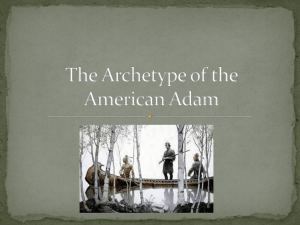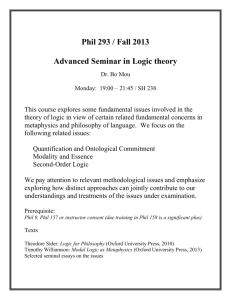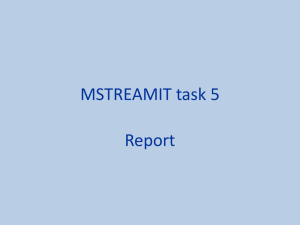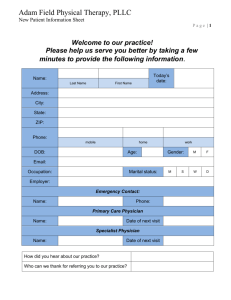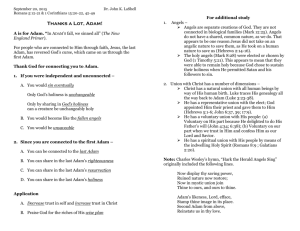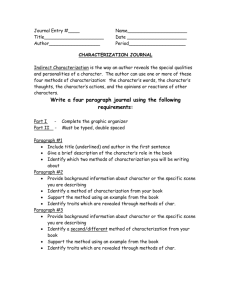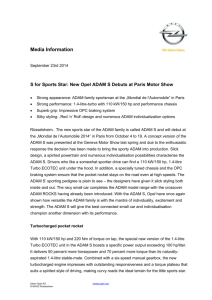DNA-background-and-themes
advertisement
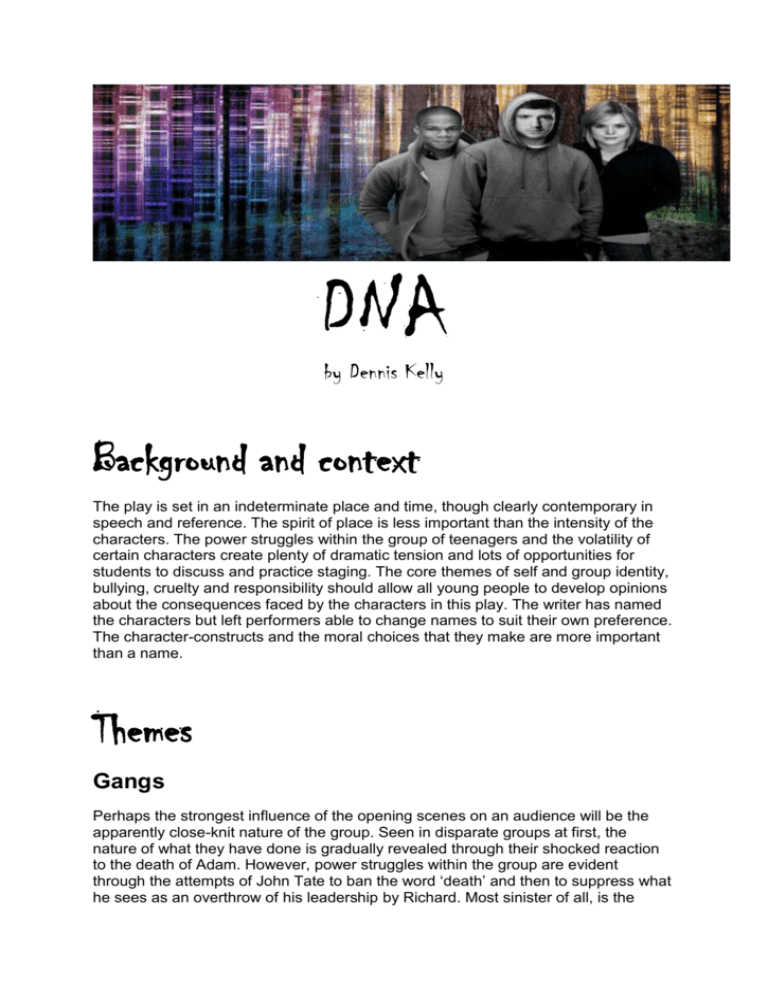
DNA by Dennis Kelly Background and context The play is set in an indeterminate place and time, though clearly contemporary in speech and reference. The spirit of place is less important than the intensity of the characters. The power struggles within the group of teenagers and the volatility of certain characters create plenty of dramatic tension and lots of opportunities for students to discuss and practice staging. The core themes of self and group identity, bullying, cruelty and responsibility should allow all young people to develop opinions about the consequences faced by the characters in this play. The writer has named the characters but left performers able to change names to suit their own preference. The character-constructs and the moral choices that they make are more important than a name. Themes Gangs Perhaps the strongest influence of the opening scenes on an audience will be the apparently close-knit nature of the group. Seen in disparate groups at first, the nature of what they have done is gradually revealed through their shocked reaction to the death of Adam. However, power struggles within the group are evident through the attempts of John Tate to ban the word ‘death’ and then to suppress what he sees as an overthrow of his leadership by Richard. Most sinister of all, is the contribution of Phil, who has not spoken throughout a tirade by Lea (his longsuffering girlfriend) where he details a well-constructed plan to absolve the group from any blame for the death of Adam – with DNA as part of the cover. The role of the female characters is interesting in that Cathy ultimately takes on the role of gang leader by the end of the play, while Lea leaves, unable to cope with Phil’s solution to the problem of the reappearance of Adam. Bullying Psychological bullying as well as the physical abuse of Adam is a predominant theme in the play and echoes the treatment of the subject in Lord of the Flies and I’m the King of the Castle. Phil is perhaps the most interesting character of all as he does not respond to his girlfriend Lea in a number of scenes where she is quite obviously looking for assurance and security. She speaks almost in monologue were it not for the fact he is on stage, at times even speaking for him. His seemingly callous disregard for her feelings is tantamount to bullying and his reaction to her leaving at the end of the play is a surprise. Jan and Mark recount with relish what they did to Adam when they believed he died falling through the grille. John Tate, who bullies mercilessly to keep power, disappears from the action early but is referenced as having ‘lost it’ and ‘found God’ as the play progresses. There are clearly consequences for their actions. The weaker members of the group, Danny, the aspiring dentist, and Brian are used cynically by Phil to help in the cover-up (after being threatened with the same fate as Adam) and are damaged, as is everyone else in the process. Everyone is changed by what happens but not always in the way that we might expect. Responsibility The play makes the audience question who is ultimately responsible for the callous behaviour of the group towards Adam in the initial attack – and later when he makes his surprise reappearance as a feral child. The characters fight to save themselves from blame; Jan and Mark consistently refer to ‘laughing’ and being in ‘stitches’ as they recount Adam’s desperately sad attempts to be accepted by the group as he ate leaves, stole vodka, had cigarettes stubbed out on him and ultimately fell to his ‘death’. The shock and the guilt is seen in the smaller conversations such as when Lea accuses Phil – ‘you’re not human’. As a collective, the responsibility is taken as a shared ‘burden’ but this is actually a device designed to keep all the gang members quiet. When Phil states, ‘I’m in charge. Everyone is happier. What’s more important: one person or everyone?’, he is starting to make them all feel that they cannot step back from the solution that he himself has decided will be the result of the resurrection of Adam. This time the group will be responsible for cold-blooded murder and not accidental manslaughter. This seems a small step for Phil who has insisted that Mark positively identify the completely innocent postman, whose DNA was found on Adam’s jumper.


